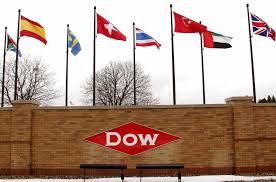Here’s The Dow Jones Stocks You Should’ve Invested In After Trump’s Election

A new year, a new high.
Just four days into 2018, the Dow Jones industrial average passed the 25,000 milestone on Thursday amid strong economic reports and growing optimism about the new tax law.
Buoyed by strong December private sector job gains and bullish business data from outside of the U.S., the 30-company index, a proxy for the overall stock market, closed at 25,075, up 153 points for the day. It came just 35 days after the index first reached 24,000.
The Dow’s near nine-year bull continued shortly after President Donald Trump’s 2016 election. Investor optimism about the Republican administration’s promised tax cuts and deregulatory stance helped the Dow rise from just below 19,000. More recently, strong corporate earnings and a wider global economic recovery helped to send the index even higher.
“I think it will continue because inflation remains below the Fed’s target and the tax package combined with continued solid earnings continue to paint a good picture for the stock market,” said Deutsche Bank Chief Economist Torsten Slok in an email.
The post-election rally started with financial stocks such as Goldman Sachs. Since then, the make up of the strongest performers has shifted to more industrial manufacturers.
Now the biggest Dow winner is airplane maker Boeing, which has gained roughly 77% since the index hit 20,000 less than a year ago because of strong demand by commercial airlines. Boeing has also made a big contribution to the Dow’s gains since the index first breached 20,000, according to S&P Global’s Howard Silverblatt, accounting for 17.7%, or 890 points, of the overall 5,000 point gain rise since then.
IBM, on the other hand, has been the biggest drag on the index, erasing 114 points from the Dow during that same nearly 12-month period, according to Silverblatt.
And while Boeing is still the strongest stock on the Dow since Trump’s election, the weakest link is a one-time symbol of U.S. business strength— General Electric. The conglomerate has struggled to shed assets in recent years, after a series of what now appears to be ill-fated acquisitions. As a result, the company’s shares have lost roughly 37% since Trump’s election compared to the Dow’s 40% gain during that same period.
Still, there are reasons to also be wary of the Dow’s gains. Inevitably, with each new high the Dow notches, at least one asset manager or financial guru points to the arbitrary calculation of the index. It’s price-weighted—so broadly speaking, companies in the Dow index with a higher share price have a larger influence on the Dow. Yet share price has no relation to a company’s overall market valuation.
Goldman Sachs shares, for example, are around $ 257, putting the company’s overall valuation at $ 96.9 billion. Apple shares, on the other hand, are near $ 173 and therefore counts for less on the Dow—even though it’s the world’s largest publicly traded company, with a valuation of $ 888 billion.
But the Dow’s performance does mirror to some extent that of the S&P 500, an index that tracks far more companies.
The S&P 500 also closed at an all-time high Thursday, up nearly 11 points at 2,724. Wall Street has predicted that the index will close somewhere in the lower 2,800s by the end of 2018.
